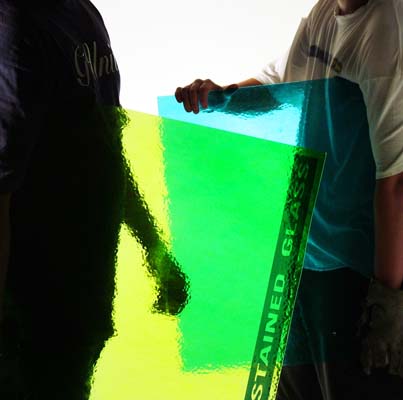As a glass artist, you must be able to visualize an idea and translate it to glass. In addition, you need an interest in and understanding of the technical processes involved in glass production. You must also be able to communicate your ideas in the form of sketches and models.
Designs must be practical as well as aesthetically pleasing. This is particularly relevant in the design of architectural glass products. You must, therefore, have an appreciation of the functional aspects of your work.
Deadlines and strict budgets often apply and the ability to work within these boundries are important. If you are self-employed, you will need well-developed business skills, particularly in promoting your product.

Photograph by Matthew Harvey
Stained Glass artists use their creative abilities in different ways. Some work with only coloured glass in a contemporary manner where the design becomes the focus, while others choose to colour and decorate the surface of the glass. The surface is painted with vitreous paint in a variety of colours and stained in tones of yellow and applied in a traditional manner. Products include windows, light boxes, cabinets, lamps, mirrors, etc.
Generally, stained glass artists produce work for clients upon request.
Architectural Glass includes the design and manufacturing of products such as windows, lighting and architectural panels. These products are designed with a particular function in mind and include lightfittings, light boxes, wall panels and room deviders.
Stained Glass Restoration (re-leading repairing and repainting) normally necessary in old glass windows such as for churches and corporate buildings.
Kiln Formed Glass work involves the design and production of decorative or functional glass items. Methods such as fusing, slumping, forming, sagging, engraving, surface decorating and texturing are used to manufacture glass objects.